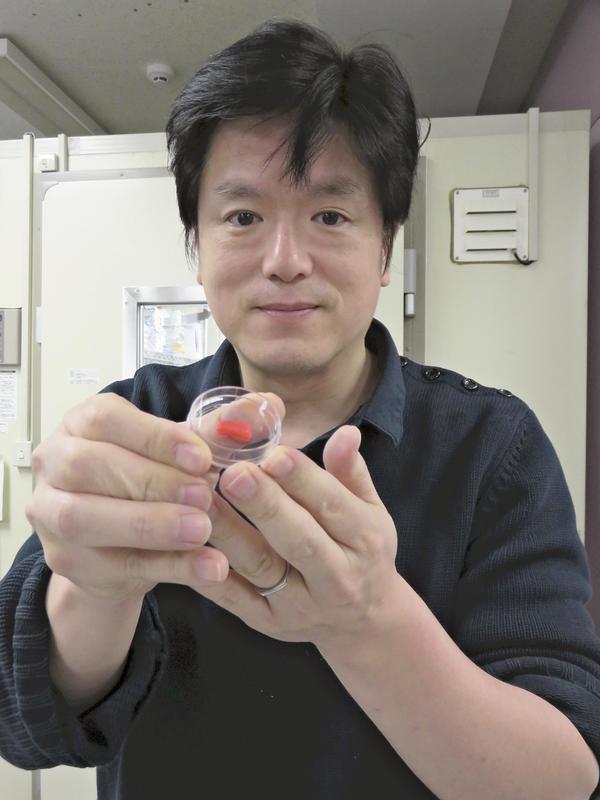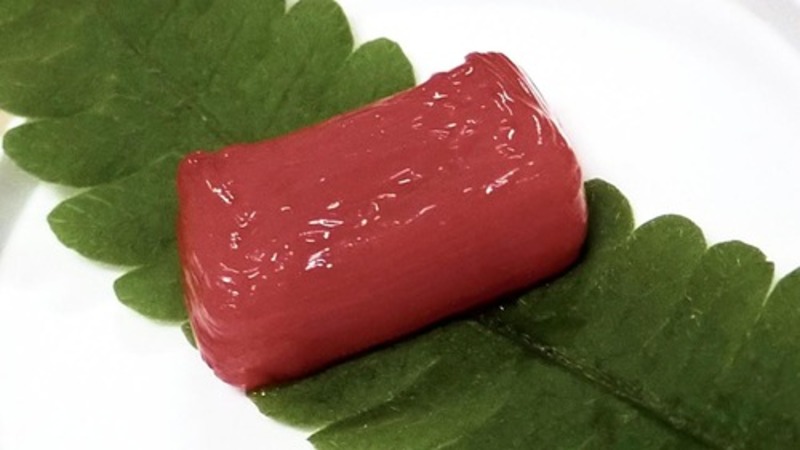
When eating hamburgers, sausages or steaks, you enjoy the unique texture of beef or pork, the juice of the meat, and the taste of fat spreading through your mouth. These are the real delights of meat. But research to reproduce meat's texture and flavor in a different form is making progress. Such products include "cultured meat," in which meat cells are grown, and "meat substitute," which is made from vegetables such as soybeans. How close are they to real meat? To answer this question, I visited a center for the research and development of new "meats."
3D muscle tissue

Looking closely at a red mass about one centimeter square in a petri dish at the Institute of Industrial Science at the University of Tokyo, I found it looked like muscle. If I put it in my mouth, I expected it would feel like the texture of meat.
The institute has jointly carried out research with Nissin Foods Holdings Co. and Japan Science Technology Agency to create steak meat by culturing cells obtained from cows.
In the culturing process, researchers grow muscle cells in a liquid that has collagen in it. The aim is to reproduce muscle tissue that has an elastic feel when bitten into. Prof. Shoji Takeuchi and other researchers succeeded in cultivating the world's first three-dimensional muscle tissue last spring.
Muscle tissue consists of a sarcomere structure in which cells fuse to form protein strips. Takeuchi found that adding vitamin C to a culture can promote muscle cell fusion. What's more, by stacking several dozen sheets of cells in which muscle fibers lay parallel to each other, three-dimensional muscle tissue was created.
"At present, it takes two to three years to produce meat from calves, but in principle, it is possible to mass-produce several dozen tons of cultured meat in one year," Takeuchi said.
However, the research has only just begun. In order to bring the meat closer to the taste of the real thing, it is necessary to develop a technology to grow fat -- which is key to meat's taste -- by culturing it together with meat cells. Cost reduction is also necessary. "I want to make cultured meat that cannot be distinguished from ordinary meat," the professor said.
Practical use with vegetables
Meat made from soybeans or other plants is called "meat substitute." This alternative has already been put to practical use at home and abroad, and "hamburg steak" and "sausage" substitutes are sold in supermarkets and other stores around Japan.
Major edible oil company Fuji Oil Co. is producing "soybean meat." The Osaka-based company pulverizes soybeans from which the oil has been extracted, adds water and compresses them to make soybean meat of various shapes and consistency.
Shape and consistency are key to making substitute meat look like flesh. The company has examined real ground meat or thinly sliced meat under a microscope so that it can make the soybean meat resemble them.
Further efforts have been made in the final stage of processing "hamburgers" and "fried chicken" to make them resemble meat even more.
Otsuka Foods Co. uses fatty acids in almost the same composition as real meat and has made a faithful reproduction of ground meat.
Major meat processing companies such as NH Foods Ltd. and Itoham Foods Inc. have also entered the market. They sell meat substitutes such as "ham" by reducing the distinct soybean smell and making use of their expertise in meat processing. As meat substitute is made from plants, it is expected to have health benefits, such as lowering cholesterol levels.
Read more from The Japan News at https://japannews.yomiuri.co.jp/







